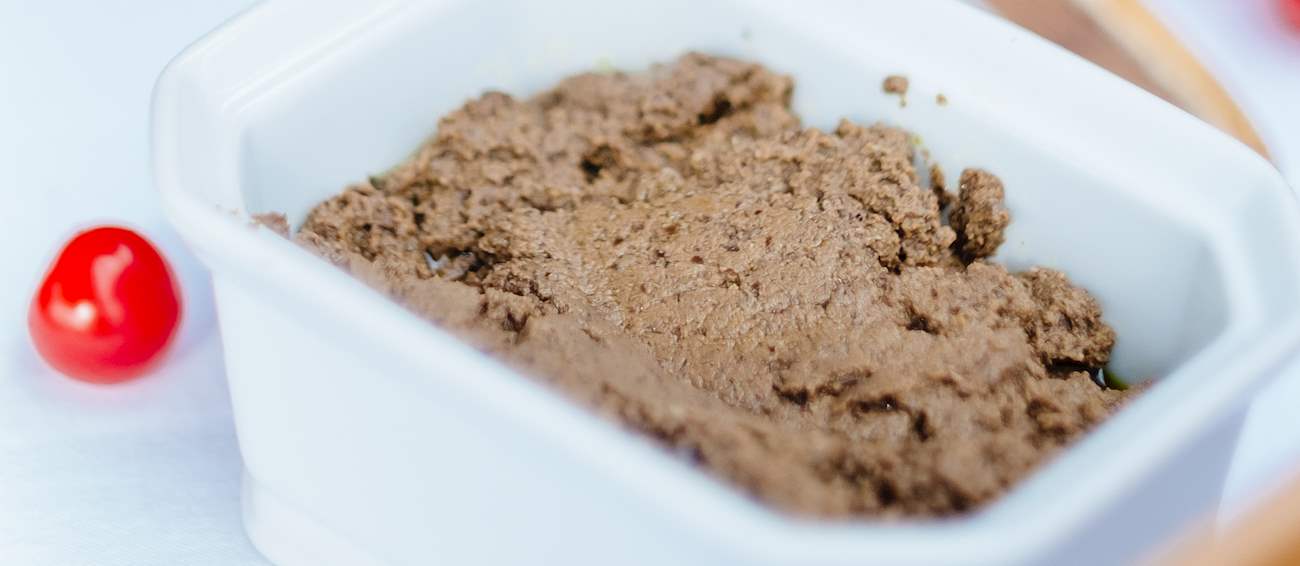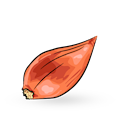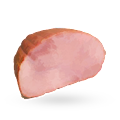MAIN INGREDIENTS
Ficelle picarde or Picardy string is a traditional dish from the French region of Picardy, a simple and easy entrée that can be found on the menus of numerous restaurants across northern France. The dish consists of a savory pancake that is filled with ham, cheese, and mushrooms.
The pancake is often topped with grated cheese, and it is sometimes baked in the oven. Although it is a representative of the Picardy region, it was actually invented in the city of Amiens in the 1950s, when it was served to notable locals attending the Hotoie Exhibition.
MAIN INGREDIENTS
Anchoïade is a traditional dip originating from Provence. It consists of anchovies which have been packed in oil, red wine vinegar, minced garlic, and olive oil. The anchovies and garlic are ground into a paste, and it's then combined with vinegar and olive oil, which should be whisked in bit by bit until the desired consistency has been reached.
Anchoïade is often slathered on grilled bread as a spread, used as a dip with crudités, or as a dressing for salads. However, it's most commonly used with crudités, so make sure you have an assortment of vegetables prepared for dipping, such as celery stalks, thinly sliced black radishes, or florets of broccoli romanesco.
MAIN INGREDIENTS
This specialty is a variation of the French terrine, a type of meat loaf that is prepared with rabbit (called lapin in French) meat. Terrine de lapin is typically made with a combination of coarsely chopped or ground rabbit meat (farm-raised or wild), fat, and a variety of spices such as thyme, rosemary, pepper, bay leaves, juniper berries, allspice, ginger, and savory.
Ground pork, pork belly, poultry, or even veal shoulder are commonly added to the combination, and the meat mixture is usually flavored with shallots, parsley, and a splash of alcohol such as sherry or brandy. Other common ingredients used for the preparation of a rabbit terrine include eggs, pistachios, olives, meat stock, mushrooms, and lemon or orange zest.
MAIN INGREDIENTS
Pâté Lorrain is a French dish consisting of marinated meat that is wrapped in puff pastry. In traditional French cuisine, the meat needs to be a mixture of pork and veal, although modern recipes also suggest other varieties, such as rabbit or chicken.
The meat is sliced and marinated in a flavorful mixture of wine, thyme, parsley, bay leaves, and shallots. Before baking, it is completely enclosed in puff pastry. The dish is usually associated with Baccarat, a commune located in the Lorrain region.
This French dish consisting of coarsely chopped meat and fat is similar to a meat loaf. The name terrine also refers to the earthenware vessel used to cook it, which also serves as a mold. The combination of meat (often goose or duck liver, pork, deer, or boar) is usually marinated in a mixture of herbs and wine before it is left to cool, when a flavorful jelly develops in the dish.
Although it was originally invented as a hearty and substantial food for French peasants, today it has evolved into an elegant appetizer that commonly appears on the menus of many upscale restaurants.
VARIATIONS OF Terrine
MOST ICONIC Terrine
View moreWhat was once used as a garnish in haute cuisine is now its own dish, known as quenelle. Essentially, it is a tender dumpling that is filled with ground meat, poultry, fish, or vegetables, seasoned and combined with breadcrumbs, eggs, fat, flour, or cream.
The dumpling is traditionally oval in shape and poached in water or stock. Today, it is served either as an appetizer or as a main course, although it can still be used as a garnish. Originally, quenelle was invented in Lyon in the 19th century, and it was made exclusively with the flesh of pike–a light white fish.
MOST ICONIC Quenelle
View moreMAIN INGREDIENTS
Mousse de foie gras is a French delicacy made with slices of sautéed duck or goose foie gras that are processed into a smooth, light, and spreadable paste with ingredients such as softened butter, béchamel sauce, or crème fraiche (a thick, slightly sour cream).
This dish typically uses the cheaper (grade B or C) foie gras, and it is usually seasoned with salt and black pepper and flavored with the tart Pomme de Vie apple brandy, orange-flavored Grand Marnier, or port wine. A simple, yet elegant appetizer, foie gras mousse is incredibly versatile.
MAIN INGREDIENTS
Jambon persillé is a French appetizer coming from the region of Burgundy. It consists of a ham hock that is simmered in white wine and made into a terrine with a hefty amount of parsley. This humble dish is also a historic one: the Ediun tribes from Burgundy were great charcutiers, and the Roman army, who arrived in Burgundy later, introduced other key ingredients to the dish.
It is said that the Romans used to tuck sprigs of parsley in their clothes for protection, and with all of the ingredients coming together in the same region, it is no wonder that jambon persillé was invented in the process.
MAIN INGREDIENTS
Pâté en croute is a traditional dish made with meat pâté that is gently wrapped in a pastry cover, then baked. The traditional pâte is made from a mixture of pork and veal, although modern recipes also use other types of meat such as rabbit or chicken.
The meat is cut into thin strips and marinated for hours in a flavorful mixture of wine, thyme, parsley, bay leaves, and shallots, before being ground into a pâte and chilled. The pâte is then shaped into a roll and covered in a layer of shortcrust pastry.
MOST ICONIC Pâté en croûte
View moreMAIN INGREDIENTS
Pan-seared foie gras is a simple but elegant French dish that is typically enjoyed on special and festive occasions. It is prepared with a thick slice of foie gras that is shortly seared, preferably on duck fat, and is then merely seasoned with salt and pepper.
The juices from the foie gras are then usually combined with fresh or dry fruit, whiskey, and wines such as Riesling, Port, Sherry, or Sauternes. It is recommended to pair foie gras poêlé with dessert or dry wines.
MOST ICONIC Foie gras poêlé
View moreTasteAtlas food rankings are based on the ratings of the TasteAtlas audience, with a series of mechanisms that recognize real users and that ignore bot, nationalist or local patriotic ratings, and give additional value to the ratings of users that the system recognizes as knowledgeable. For the “28 Worst Rated French Appetizers” list until April 19, 2025, 3,455 ratings were recorded, of which 2,841 were recognized by the system as legitimate. TasteAtlas Rankings should not be seen as the final global conclusion about food. Their purpose is to promote excellent local foods, instill pride in traditional dishes, and arouse curiosity about dishes you haven’t tried.






























